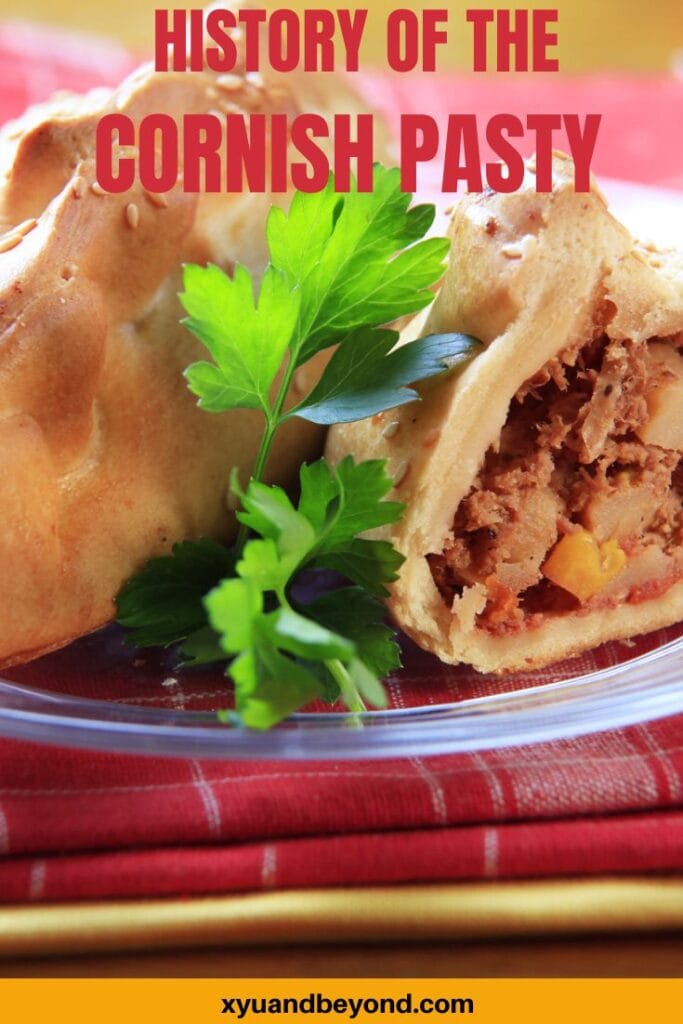History of the Cornish Pasty: the original handheld food
Cross over the Cornish border and there’s barely a Gregg’s in sight (for those of you unfamiliar with Gregg’s it is a sort of fast-food chain that specializes in pastries of all kinds). Cornwall is famous for its pasties, which are essentially a meal of meat, potatoes and vegetables enclosed in golden pastry, although it has evolved over the years. The humble pasty is part of Cornish food culture that has spread around the world.
Cornish pasties are a beloved and iconic British pastry that has been enjoyed for centuries. Originating in Cornwall, England, these hand-held meat and vegetable-filled pastries have a fascinating history that dates back to the 13th century when they were consumed by the rich upper classes and royalty.
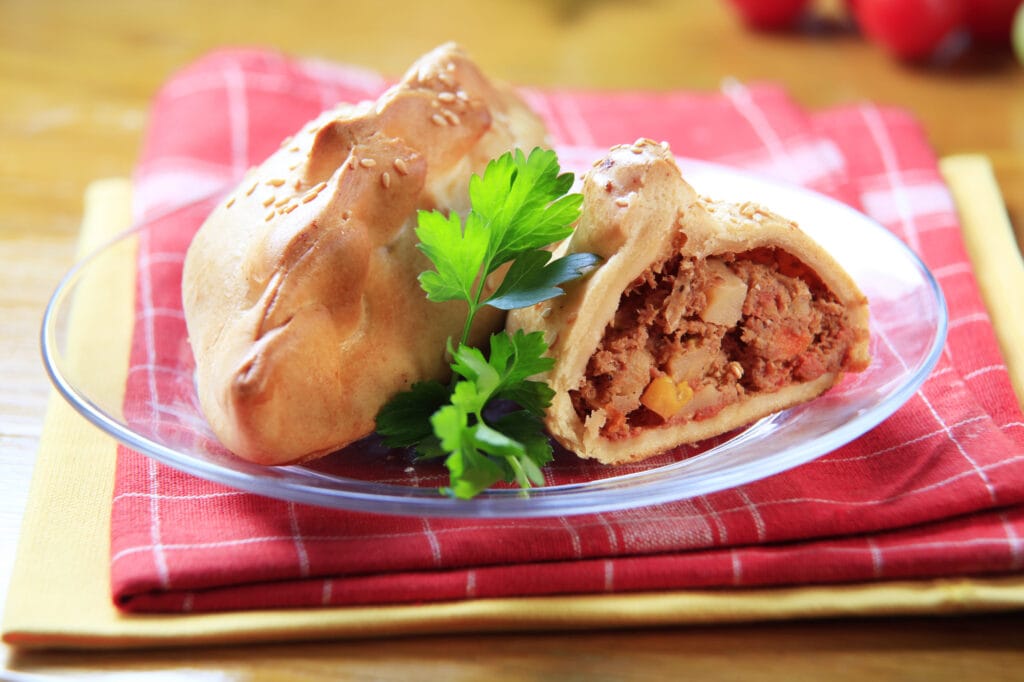
Over the centuries Cornish pasties became a convenient and delicious meal for tin miners to take underground with them, as the pastry crust acted as a disposable handle, allowing them to eat their pasty with dirty hands without getting the best part of the pasty dirty.
The history of the Cornish Pasty is associated with the Cornish tin miners of Cornwall. You can find pastry-based goods all over the UK – and indeed, elsewhere in the world – so what is it that makes Cornwall’s pasties so popular and of course the world’s first hand pie? We’ll go into it in this post!
This post may contain affiliate links. If you make a purchase through a link, I may receive a small commission, at no cost to you. These commissions help keep this website up and running, and I thank you for your support. Read my full disclosure here.
- History of the Cornish Pasty: the original handheld food
- Frequently Asked Questions about the History of the Cornish Pasty
- Where did the pasty originate?
- Why are Pasties called pasties?
- What are Pastys called in the Cornish language?
- How were Cornish Pasties used by miners?
- Were Cornish Pasties popular beyond the mining community?
- What role did Cornish Pasties play in Cornish culture?
- How did the wives of Cornish miners contribute to the tradition of Cornish Pasties?
- What are the Cornish Knockers?
- History of the Cornish Pasty
- Cornish pasties and mining
- Cornish Pasty in Mexico
- Michigan’s Cornish Pasties
- Cornish pasties today
- Authentic Cornish Pasties according to European standards
- Where to get the best Cornish pasties
- Cornish pasty recipe!
- Frequently Asked Questions about the History of the Cornish Pasty
Frequently Asked Questions about the History of the Cornish Pasty
Where did the pasty originate?
The origin of the pasty in British cuisine dates back to the 13th Century, when it was primarily enjoyed by the wealthy and royalty. The fillings included a variety of meats such as venison, beef, lamb, and seafood like eels, cooked in flavorful gravies and fruits. It was not until the 17th and 18th centuries that miners and farm workers in Cornwall started to use pasties as a convenient and nourishing meal during their workdays.
The pasty is a traditional savoury pastry dish with a well-documented history. The history of the Cornish pasty in Cornwall, is that it became a staple for miners working in the tin mines. It was an essential part of their diet, providing a convenient and portable meal. The pastry filled with meat and vegetables was designed with a crimped edge as a means of holding the pasty with dirty hands.
Why are Pasties called pasties?
The name pasty is a mutation of the Medieval French “paste”, for pie.
What are Pastys called in the Cornish language?
In Cornwall, a pasty is often called an “Oggie”, and while it is unclear as to where the word originated, some people have suggested that it is derived from hoggan, a kind of bag in which the miners carried their lunch.
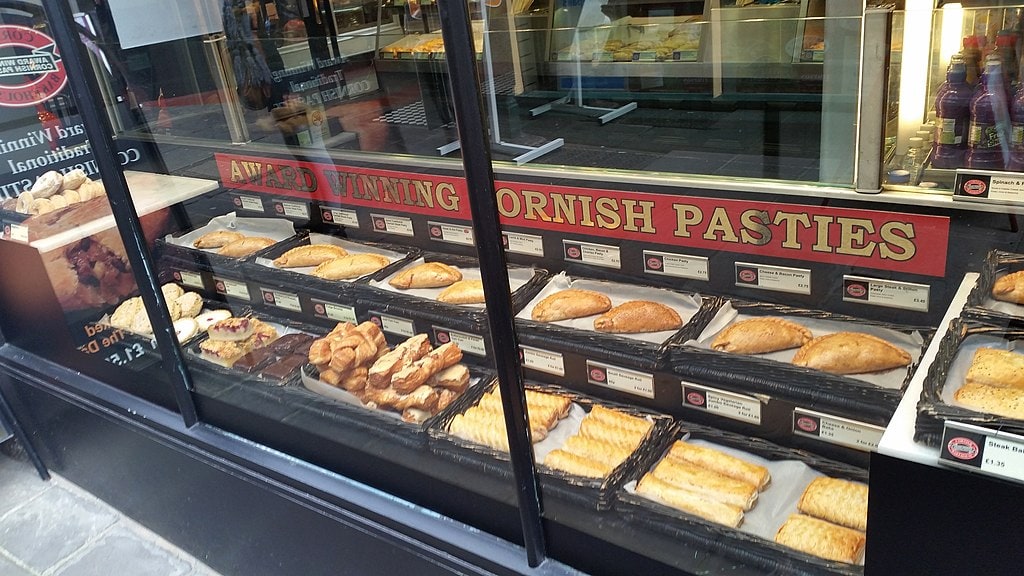
How were Cornish Pasties used by miners?
Cornish tin miners relied on the pasty as a practical and hearty meal. The miners would take the pasty underground, eating from one end where they held the pastry, which was often filled with ingredients like meats, swede, and turnip. It served as an all-in-one meal that provided sustenance for their long shifts underground.
Were Cornish Pasties popular beyond the mining community?
While the pasty was initially created as a convenient meal for miners, it soon gained popularity beyond the mining community. The Cornish pasty became a beloved dish in Cornwall and was enjoyed by the locals as well as visitors to the region.
What role did Cornish Pasties play in Cornish culture?
The Cornish pasty is deeply rooted in Cornish culture and history and has been a documented part of the British diet since the 1300’s. It has become a symbol of the county’s culinary heritage and a dish that represents the ingenuity and resourcefulness of the miners who relied on it for sustenance.
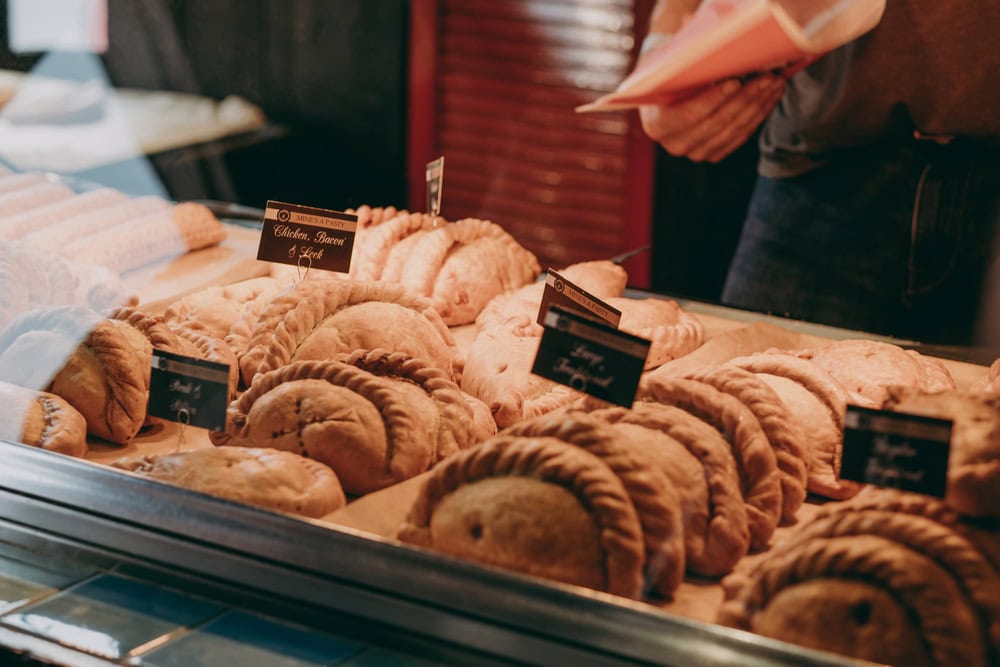
How did the wives of Cornish miners contribute to the tradition of Cornish Pasties?
The wives of Cornish miners played a crucial role in the tradition of Cornish pasties. They would lovingly prepare these all-in-one meals to provide sustenance for their husbands working in the mines. The pasties were carefully crafted and became a lunchtime staple. One of the traditions was that the miner’s wives carved their husbands initials into the end of the crust so they could identify their dinner and leave the end for the “Knockers”.
What are the Cornish Knockers?
“Knockers” were the mischievous underground pixies of Cornish folklore who needed bribing with food to stay on good behavior. They were left the one end of the pasty as their share.
History of the Cornish Pasty
What is a Cornish pasty? A traditional British pie made with a shortcrust pastry in a round stuffed with meat, turnip (swede), potato and onion and the only spices used are salt and pepper the dough is then sealed and baked.
The traditional Cornish pasty, which since 2011 has had Protected Geographical Indication (PGI) status in Europe. Today, the pasty is the food most associated with Cornwall. It is a traditional dish and accounts for 6% of the Cornish food economy.
Cornish pasties have been mentioned in texts from the Medieval period, and a letter has even been found addressed to Henry VIII’s third wife, Jane Seymour, asking her if she enjoyed her pasty!
Therefore, it seems that the original Cornish pasty was food for the upper class. However, miners would soon adopt them, which arguably caused them to become such a popular food.
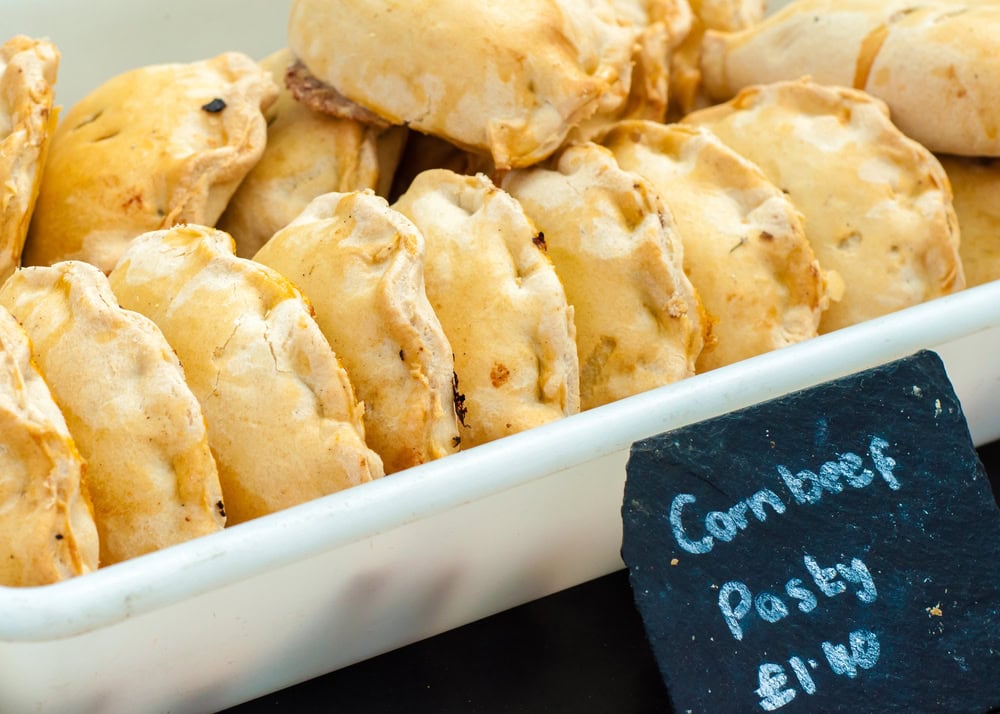
Cornish pasties and mining
Cornwall is a dreamy, beachy destination – there’s no argument about that. The region has 400 miles of coastline, dramatic cliffs and golden beaches. However, there’s so much more to Cornwall than meets the eye.
Nowadays, Cornwall’s primary industry is, without a doubt, tourism. It’s one of the most popular summer destinations in the UK and even sees its fair share of visitors in the winter.
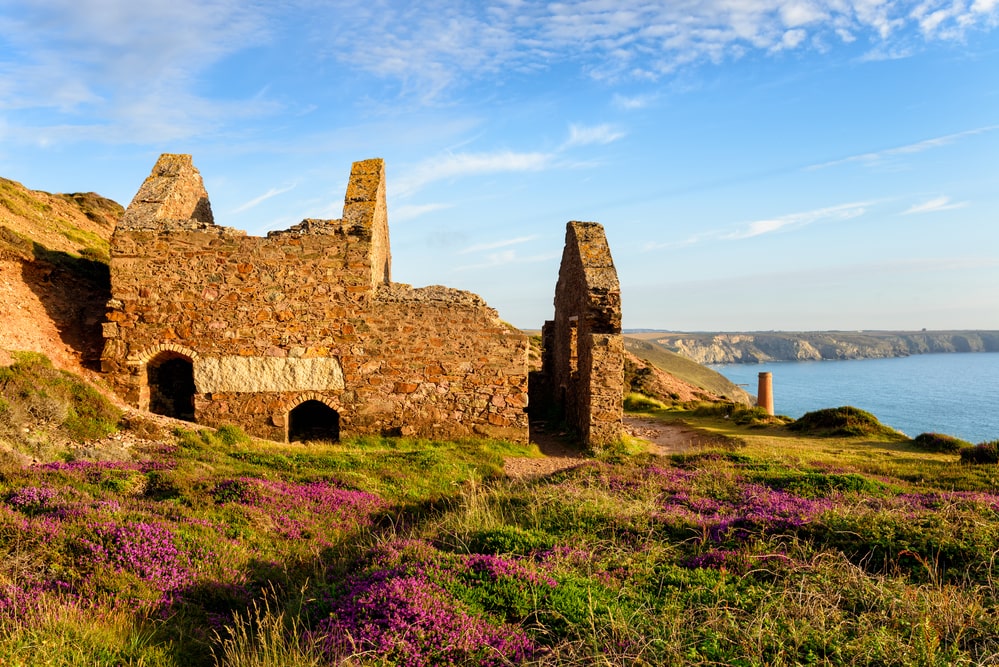
However, 200 years ago, there was barely a tourist in sight – instead, most Cornish people made a living from tin mining.
Tin was found all over Cornwall and in limited spots in West Devon, and for hundreds of years, thousands of miners descended underground every day to source some of this tin.
You can learn all about this history at the Geevor Tin Mine, one of the best things to do near St Ives in West Cornwall.
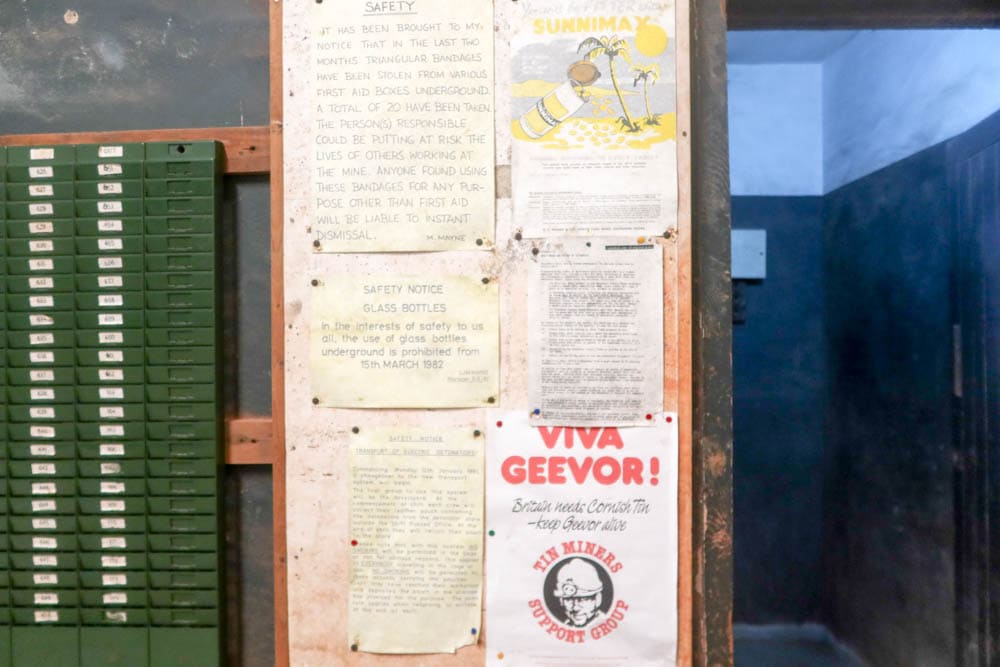
So, where do pasties come into this? Mining was an extremely tough job, with long days and lots of physical labour. Men who worked down the mines would, therefore, want a filling meal.
The answer? Cornish pasties. The pastry-enclosed meals aren’t exactly healthy, but they did fuel Cornish workers through the long hard shifts in the mines.
They also stayed warm for hours because they were so dense and were favoured because they were easy to carry (this was before Tupperware existed!).
Cornish pasties are known for their signature trim. The miners would hold the pasty by this trim while they ate and then threw it away because they would have dirt or worse, arsenic on their hands coal-mining.
Another reason miners threw the crusts into the mines was that they believed in fairies. The knockers were a type of fairies rumoured to live in the mines, and miners would leave the crusts as an offering, hoping that they would act as a bribe to keep them safe while at work.
Unfortunately, mining in Cornwall was a perilous profession, and many people lost their lives in hazardous mining accidents.
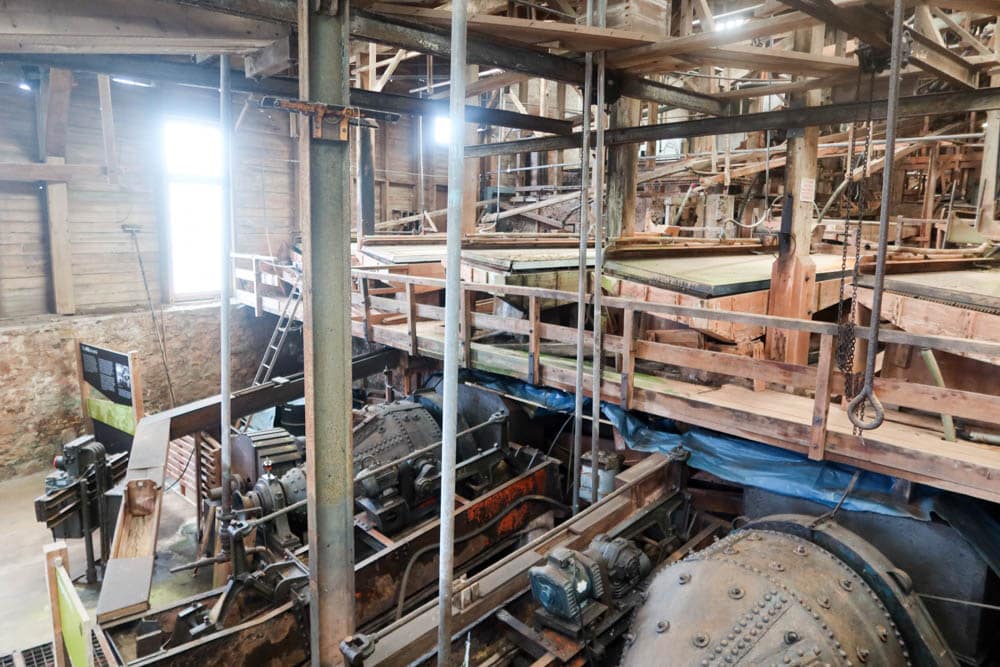
While faeries probably didn’t have anything to do with these accidents, Cornish culture is typically very superstitious, and miners felt they needed to do something to ensure their safety.
Cornish tin was a finite resource, and when it started running out in the 19th century, Cornish men, women and children began leaving to find employment opportunities elsewhere.
As Cornish men were so well trained in mining, many considered moving abroad, where there were still many resources to mine. This resulted in the Cornish diaspora, which extends across countries like Australia, the USA, South Africa, Brazil and, notably, Mexico.
Cornish men and their families moved to these specific countries due to the work opportunities – there was gold in Australia and the USA and silver in Mexico.
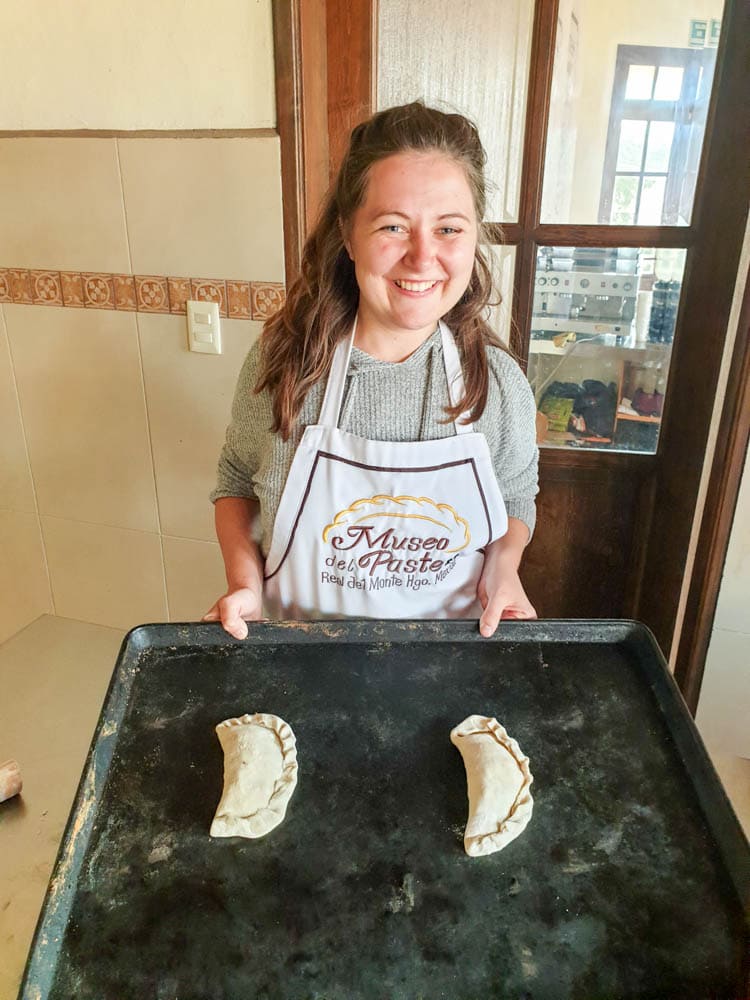
As not much of this had yet been mined, many Cornish people had an opportunity to use their expertise to open their own mines and make a lot of money.
Cornish Pasty in Mexico
Where Cornish people went, Cornish pasties went. A group of Cornish people settled in the city of Pachuca and the nearby town Real del Monte in Hidalgo, and as the men worked in the mines, their wives made them pasties with whatever local ingredients they found.
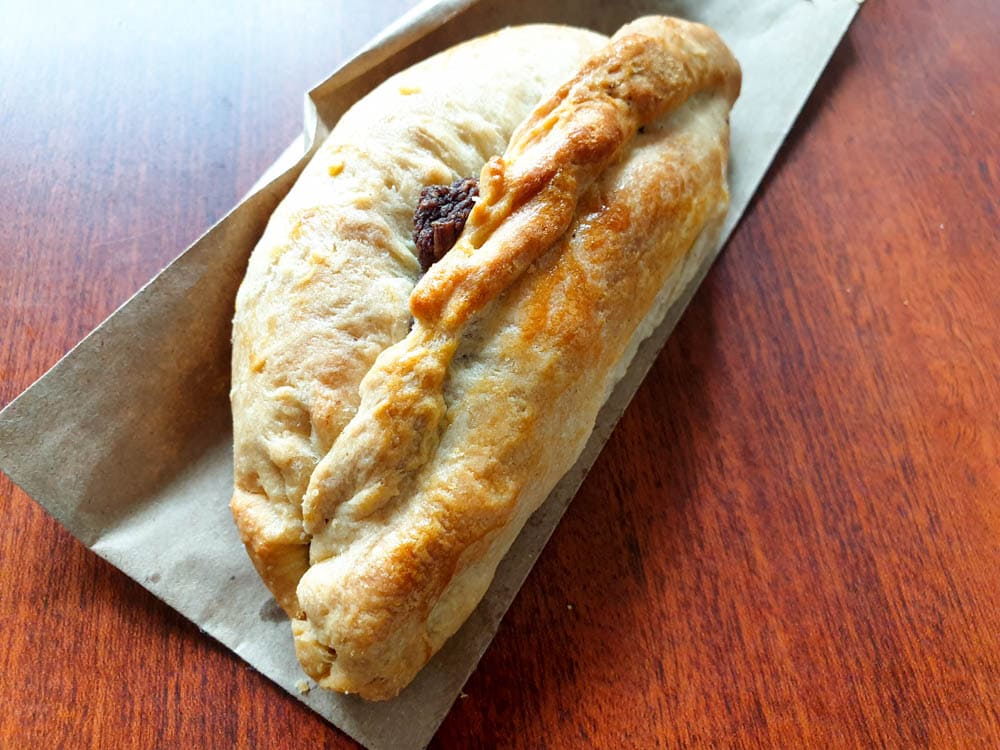
Gradually, Mexican people who worked in the mines started eating pasties as well, and they made their way into the local cuisine. However, these pasties are different to those in the UK!
They are a lot smaller for starters – Mexican miners preferred to take two or three smaller ones rather than one big one with them. They also have some different fillings.
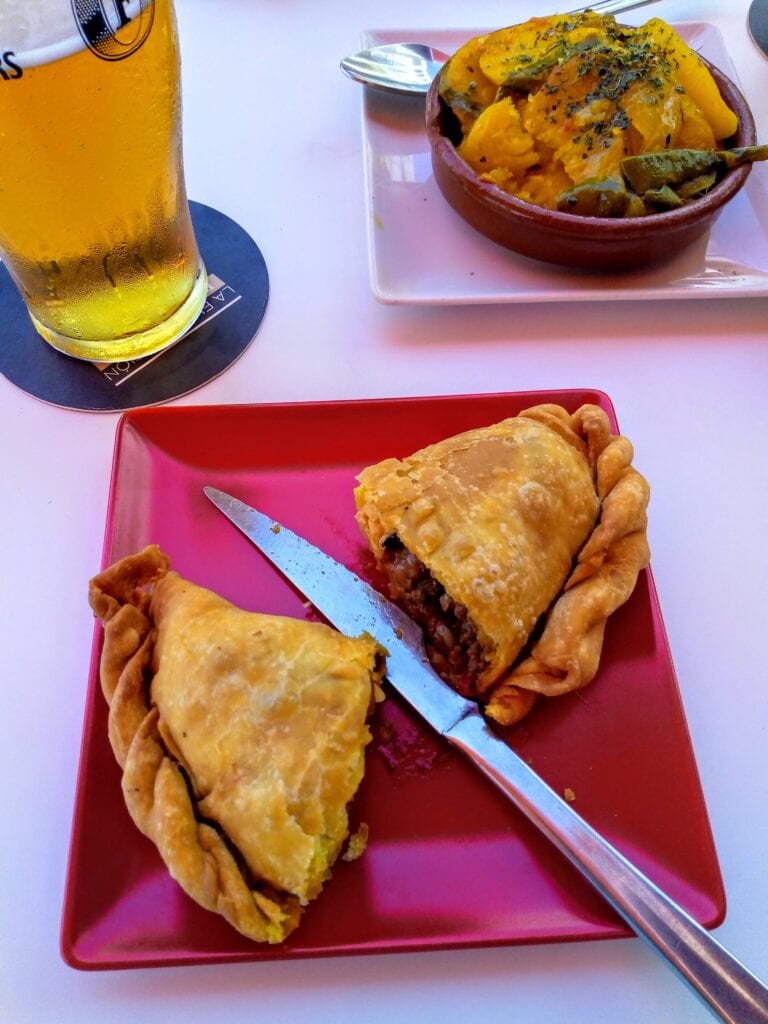
The traditional pasty has similar ingredients to the Cornish variety – beef, potato, and onion – but it also contains cilantro, a typical Mexican ingredient.
There are lots of other Mexican variations as well. Typical ones include frijoles, a bean paste popular in Mexican cuisine, and rajas con crema, a type of chilli with cream.
Nowadays, pastes are eaten throughout Mexico, but especially in Hidalgo state. Real del Monte even has the world’s only Cornish pasty museum, and it hosts a Cornish Pasty Festival every September!
Australian Cornish Pasties
You’ll find similar delicacies in other areas where Cornish people settled, particularly in the Yorke Peninsula in Australia, which has a Cornish festival called Lowender every two years, and Wisconsin and Michigan in the USA.
In Australia, the Cornish Pasty arrived with the Cornish Miners who came to work the Copper mines in 1859 along the Copper Coast of South Australia. A festival, known as the Kernewek Lowender (Cornish happiness), takes place in the towns of Wallaroo, Moonta and Kadina every two years.
The Australian company claiming to make the most authentic Cornish pasties is in Bondi. Cousin Jack Pasty Company’s recipe is pretty traditional with the exception of a touch of added parsley, peas and carrots.
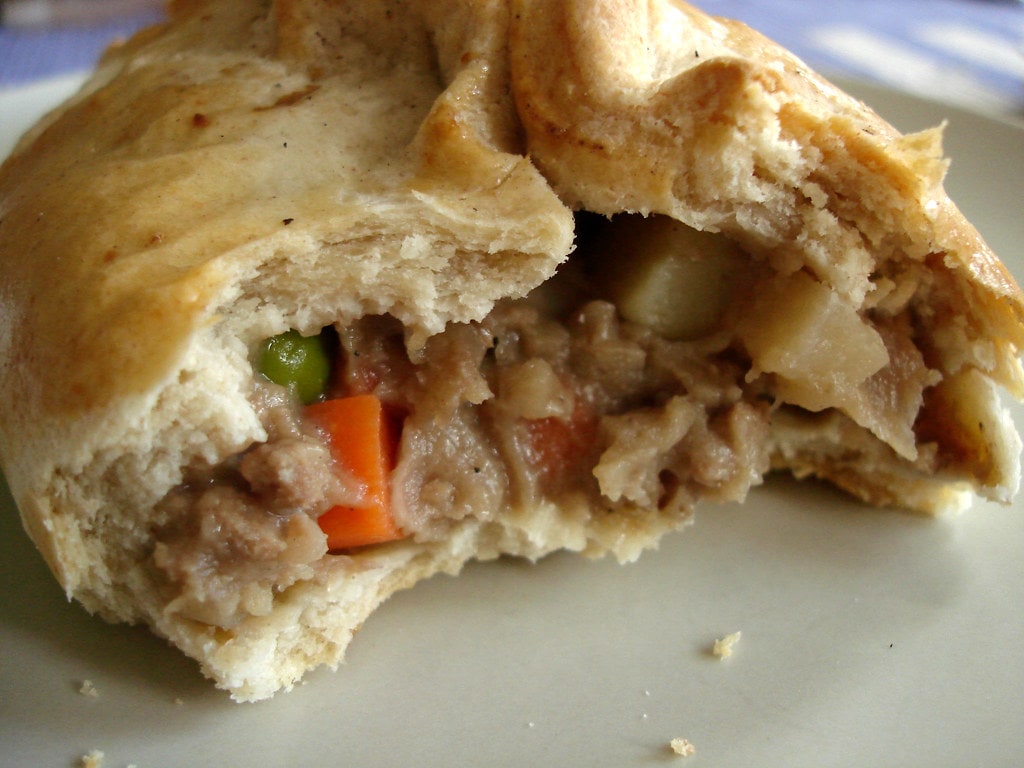
Michigan’s Cornish Pasties
Michigan’s Upper Peninsula is bounded primarily by Lake Superior to the north, separated from the province of Ontario to the east by the St. Marys River, and flanked by Lake Huron and Lake Michigan. So how did the pasty arrive there?
The pasty’s prevalence is linked to an early 1800s rush to mine copper deposits in the region. The resulting onslaught of labourers from Cornwall, England, brought over the pasty.
These pasties are based on traditional ingredients containing ground beef, carrots, rutabaga (swede) and diced potatoes. The ingredients need to be sliced into precisely sized pieces so that all would cook in the same amount of time. Michigan style Cornish Pasties are always seasoned with salt and pepper and served with ketchup or gravy – this is a point of contention in Michigan and an area of great debate – ketchup vs gravy.
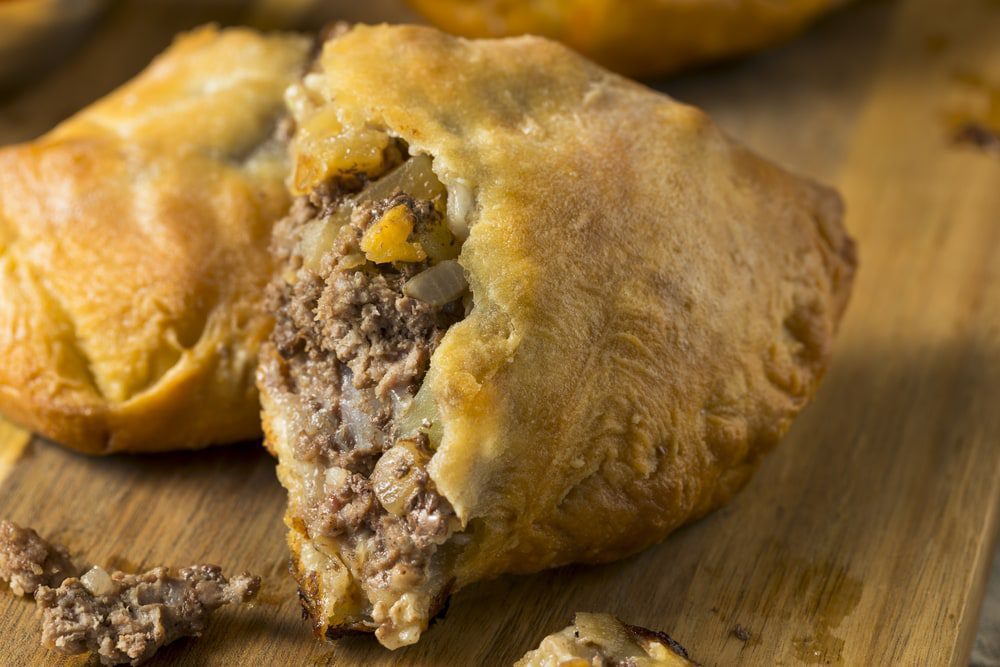
Wisconsin Cornish Pasties
The lead mining industry of the 1830s and 1840s brought miners from Cornwall, England to southwestern Wisconsin. The miners brought Cornish traditions like the pasty, filling food for hungry miners. The Wisconsin Cornish Pasty though deviates somewhat from the traditional with the addition of carrots.
Cornish pasties today
After the mining days, Cornish pasties grew in popularity. However, the Cornish Pasty Association (yes, there is a Cornish Pasty Association!) wanted the dish to have more protection, so they started campaigning for Protected Geographical Indication status from the European Union (PGI) in 2002 and successfully got it in 2011.
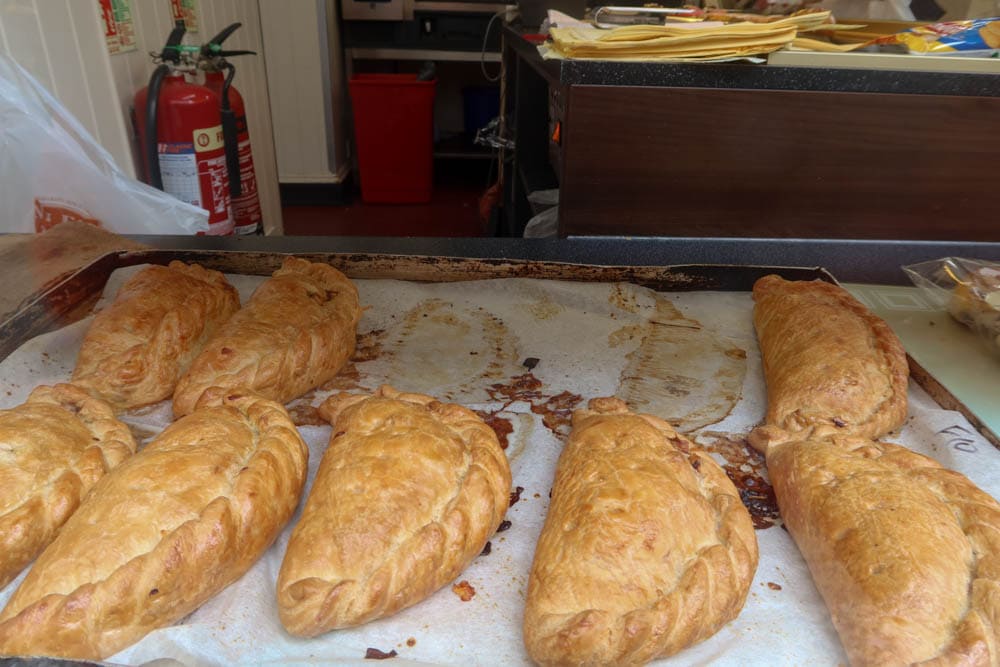
Authentic Cornish Pasties according to European standards
The PGI status sets out particular rules for what a Cornish pasty should look like, contain, and where it should be made. These are the requirements for a Cornish pasty.
- They should be prepared in Cornwall, although they do not need to be baked in Cornwall or have Cornish ingredients (although they usually do).
- They should be ‘D’ shaped and crimped along the side rather than at the top. Pasties made over the border in Devon are often crimped on the top.
- They should contain potato, onion, swede, beef and a bit of salt and pepper.
- The pasty should be cooked until golden and keep its shape when it is cooled.
Bearing this in mind, many places around the UK that made so-called ‘Cornish pasties’ no longer could call them this. However, there are plenty of places to get a genuine Cornish pasty in Cornwall itself!
Where to get the best Cornish pasties
Ginster pasties are perhaps the most famous Cornish pasties. These are proper Cornish pasties in that they conform to everything that the PGI status indicates – they are made in Callington, which is in Cornwall (although only just).
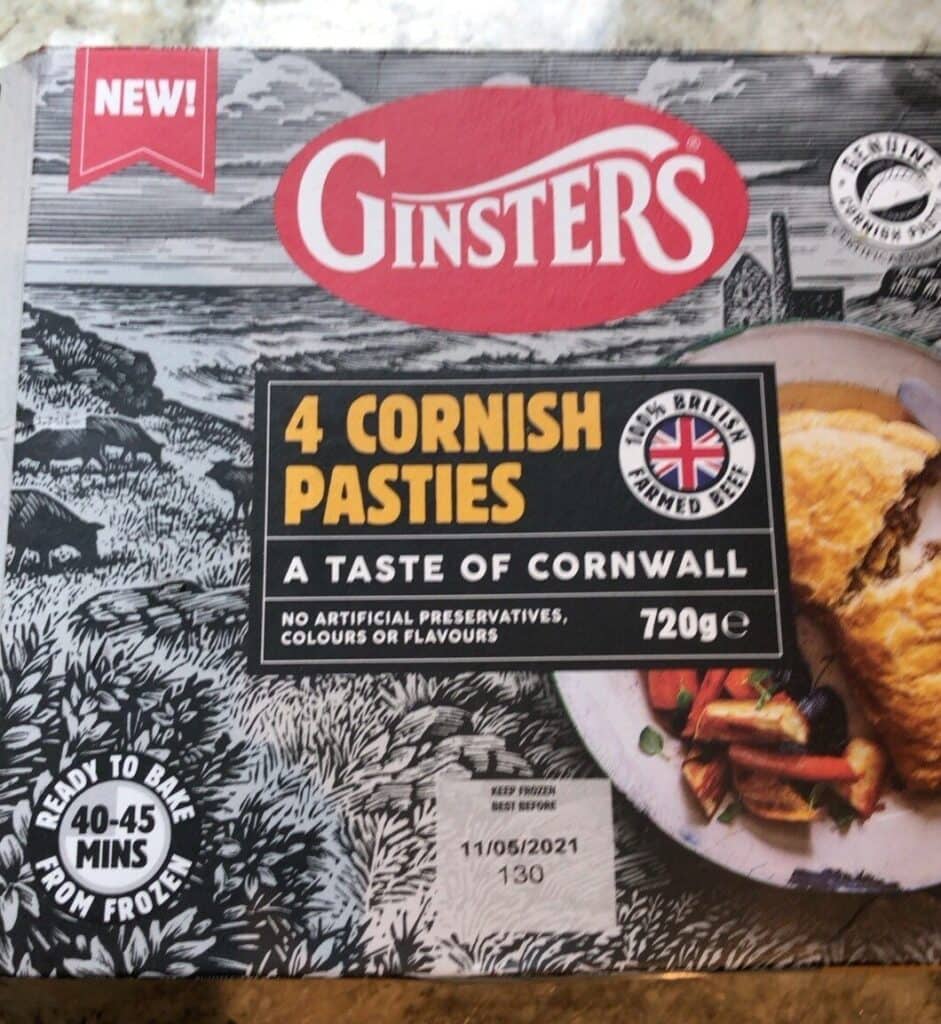
However, you won’t catch many Cornish people eating a Ginsters pasty – they find the ingredients mushy and soggy, and the flavours are not right.
Most Cornish people will argue that you can’t mass produce a pasty because all pasties should be made with love and care!
If you want some reliable chains to try, you’ll find Rowes, Warrens and the Cornish Bakery in most towns in Cornwall. Here, you’ll find tonnes of pasties – from the traditional Cornish pasty to vegan varieties!
Alternatively, there are lots of independent restaurants serving pasties all over Cornwall – in virtually every village and hamlet.
One of the best things to do in Falmouth is to try its rich dining scene, and it’s certainly got lots to offer when it comes to pasties. One of my favourites is the Dog and Smuggler in Falmouth, a Cornish pasty specialist who serves all sorts of pasties from the traditional beef, potato, onion and swede variety to more exciting combinations like Mediterranean vegetables.
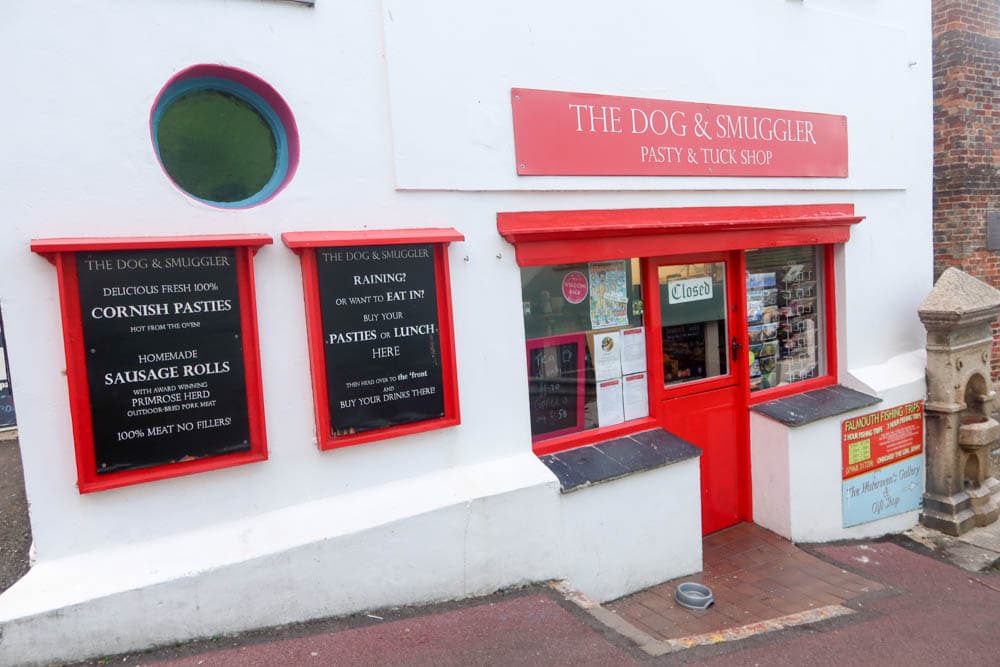
Chough Bakery in Padstow won the Cornish Pasty World Championships (yes, that’s a thing!) in 2016 – so it’s no surprise they make delicious pasties! Try traditional ingredients or alternative twists, such as steak and blue cheese.
Ann’s Pasties has two branches – one on The Lizard and one in Helston – and she makes authentic pasties following her family’s secret recipe. These are some of the most traditional Cornish pasties that you’ll get in the world!
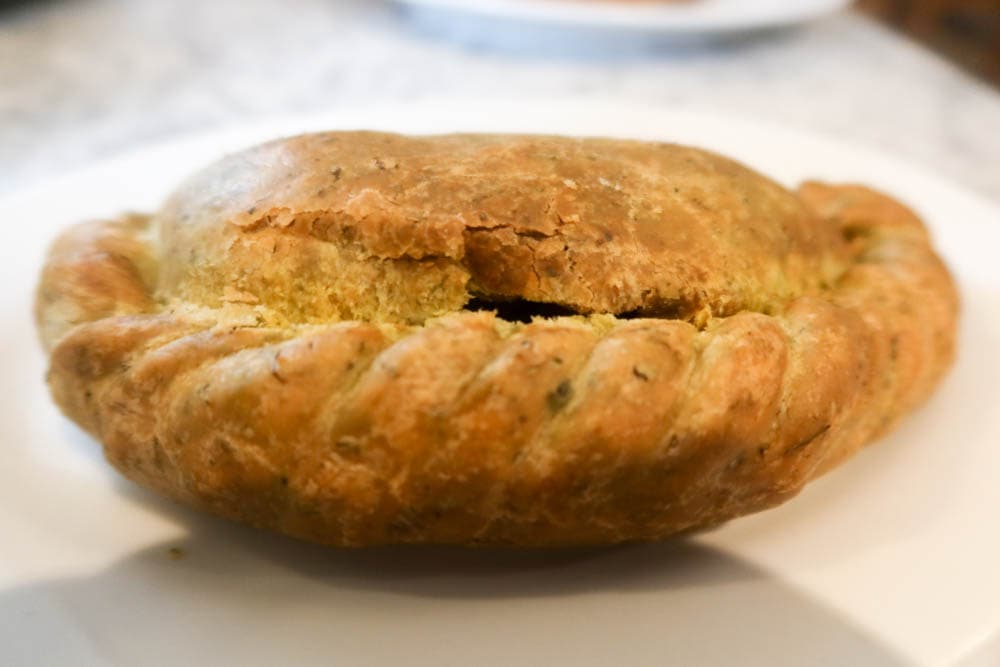
Cornish pasty recipe!
If you fancy making Cornish pasties at home (although, bear in mind that unless you live in Cornwall they cannot be called true Cornish pasties!), here is how my Cornish grandmother makes them.
Ingredients
- Pastry
- Onions
- Carrots
- Swede
- Beef (leave this out or add meat substitute for a vegetarian option)
- Salt and pepper
To make the pastry, you will need:
- 500g bread flour
- 200g butter
- 1 tbsp salt
- 200 ml water
Note: if you don’t want to make your own pastry, JusRoll shop-bought pastry works ok!
Directions
- Pour the flour into a mixing bowl and add the salt.
- Then, add the butter to the bowl. Roll it together with the salt and the flour until it is fully combined.
- Pour half the water in and start kneading. If it looks a little dry, add the rest of the water in as required.
- Continue kneading until the pastry has some elasticity. This will take a while – and you might not get it right first time!
- Once the pastry is kneaded, roll it into a ball, cover it with cling film and put it in the fridge. Let it rest for at least 3 hours, but preferably longer.
- After the pastry has rested, roll it out. Cut the pastry into circles of around 25 centimetres wide.
- Chop the onions, carrots, swede, potato and beef finely. Mix it all together in a bowl and add some salt and pepper.
- Add the mixture to one side of the pastry circle. Be careful not to add too much!
- Then, fold over the other side of the circle.
- Now it’s time to crimp the edges. Once the two sides of the circle meet, push them together and upwards, creating the trim.
- Once the pasties are complete, add a little egg or milk to the trim with a basting brush.
- Put the pasties in a preheated oven. It should be around 200 degrees celsius for the first 10 minutes, and then bring it down to 180 degrees for around 45 minutes.
- Believe it or not, many Cornish people eat their pasties with milk! Alternatively, you can just eat it fresh out of the oven.
Cornish pasties are an incredibly interesting food, with a long history spanning centuries. Eating pasties is also one of the best things to do in Cornwall – so make sure that you try one while you’re here!
To download a PDF of the recipe click here
You might also like
148 National Dishes of countries around the world
59 Traditional British Foods – from the sublime to the WTF
UNESCO Intangible Cultural Heritage – food
42 best breakfasts in the world
About the Author
Claire is a South West England travel expert. She writes about travel in Somerset, Devon, Cornwall and Dorset on her blog, Go South West England. When she’s not exploring the West Country, she is doing overland international trips, or spending time at home writing, reading and cooking!
